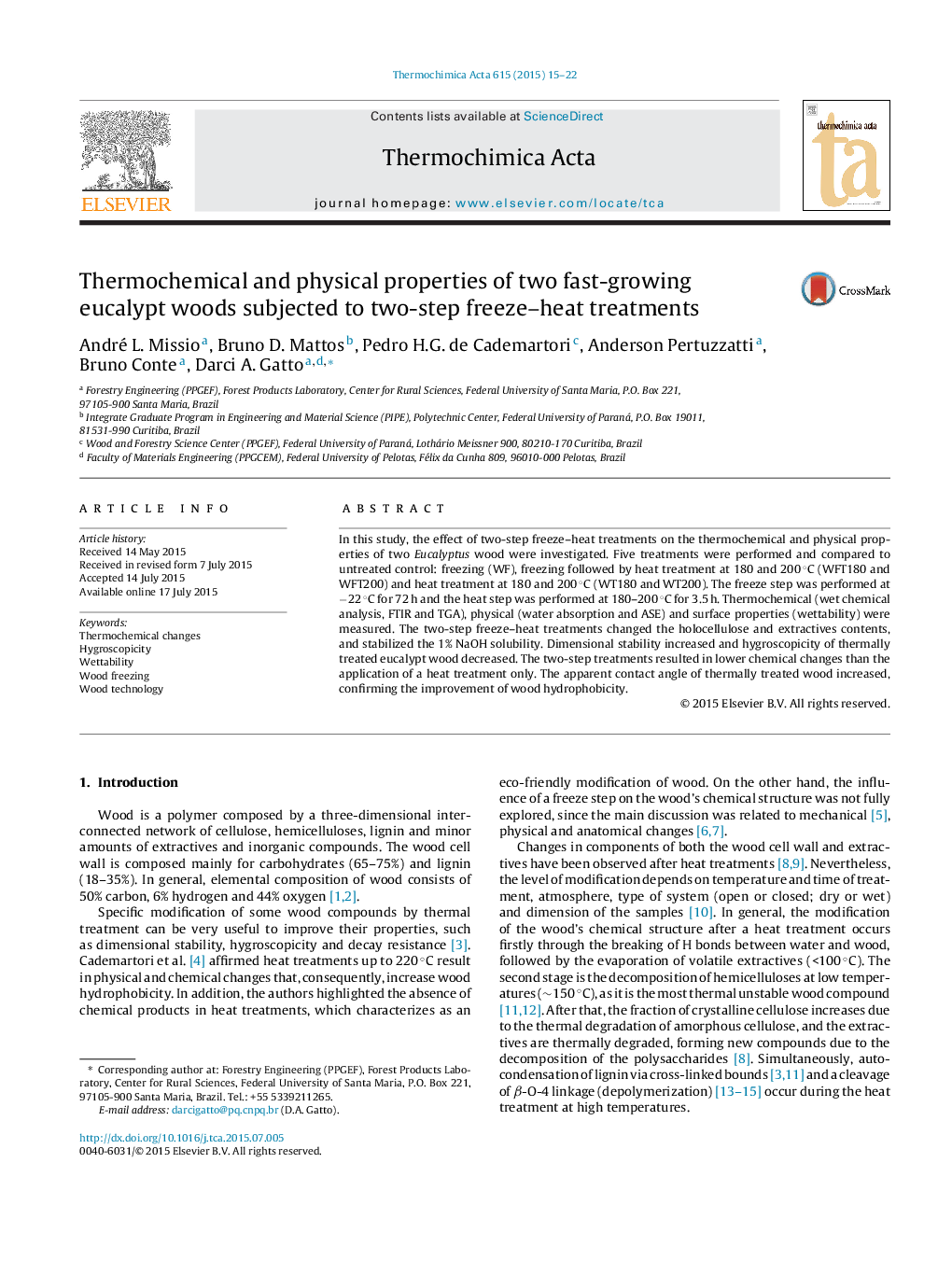| Article ID | Journal | Published Year | Pages | File Type |
|---|---|---|---|---|
| 672864 | Thermochimica Acta | 2015 | 8 Pages |
•Two-step combined treatments showed different results for each step separated.•Use of freezing reduced the degradation of the woods’ chemical compounds.•FTIR analysis proved the decrease of OH adsorption sites.•The apparent contact angle confirmed the hydrophobicity degree of wood surface.
In this study, the effect of two-step freeze–heat treatments on the thermochemical and physical properties of two Eucalyptus wood were investigated. Five treatments were performed and compared to untreated control: freezing (WF), freezing followed by heat treatment at 180 and 200 °C (WFT180 and WFT200) and heat treatment at 180 and 200 °C (WT180 and WT200). The freeze step was performed at −22 °C for 72 h and the heat step was performed at 180–200 °C for 3.5 h. Thermochemical (wet chemical analysis, FTIR and TGA), physical (water absorption and ASE) and surface properties (wettability) were measured. The two-step freeze–heat treatments changed the holocellulose and extractives contents, and stabilized the 1% NaOH solubility. Dimensional stability increased and hygroscopicity of thermally treated eucalypt wood decreased. The two-step treatments resulted in lower chemical changes than the application of a heat treatment only. The apparent contact angle of thermally treated wood increased, confirming the improvement of wood hydrophobicity.
